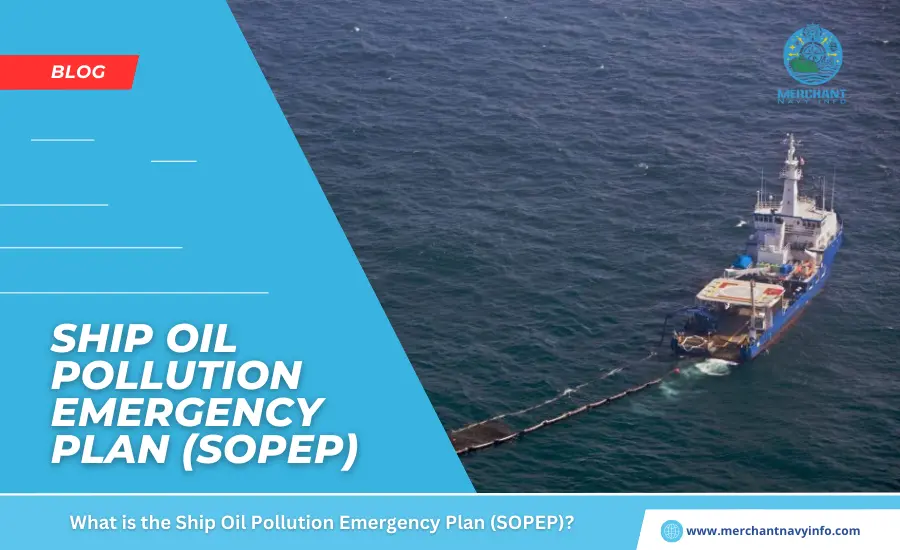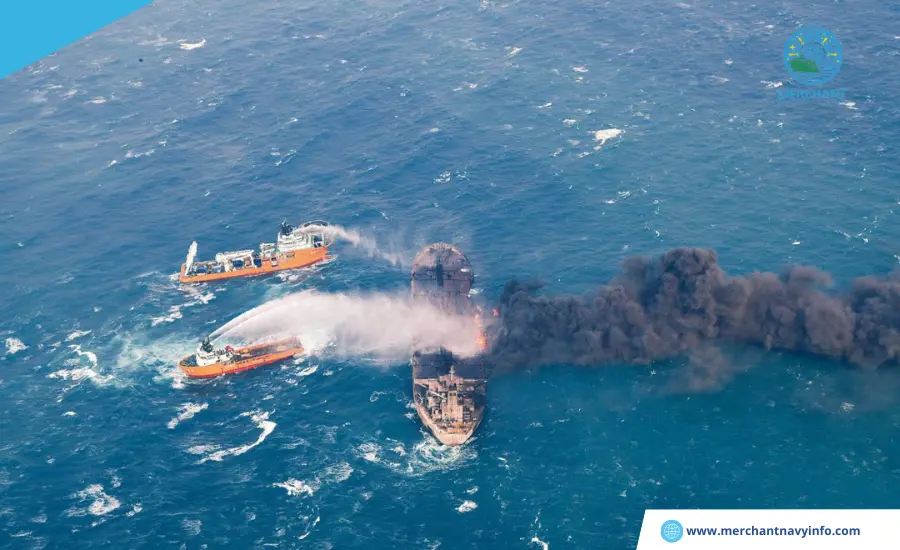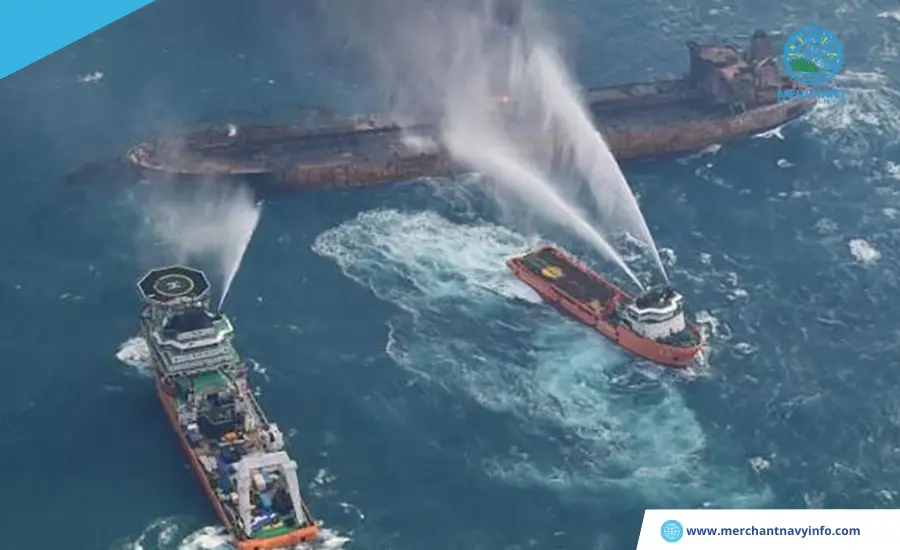
For maritime professionals working on ships, the SOPEP full form Ship Oil Pollution Emergency Plan. Closet is one of the key areas to familiarize yourself with during the first few days on board.
Understand How Important It Is For Maritime Professionals To Know SOPEP
Ship Oil Pollution Emergency Plan. When an oil spill occurs at sea, it tends to spread across the ocean surface. With devastating effects on marine mammals, birds, coasts, and also most importantly, the ocean and environment. Oil spill cleanup costs are determined by the quantity. Also quality of oil is released into the sea and is calculated based on factors. Such as legal claims, amounts paid in fines, oil loss, repairs and also cleanup. The loss of marine life and the impact on human health is enormous. Since prevention is better than cure, almost all cruise ships and cargo ships have onboard preventive plans. To avoid the above-mentioned monitoring losses, especially marine pollution and also loss of marine species. This Plan is known as SOPEP (Ocean Oil Spill Emergency Response Plan).
What is SOPEP?

As previously mentioned, Sopep stands for ‘Ship Oil Pollution Emergency Plan,’. And also in accordance with the MARPOL 73/78 requirements in Annex I. All ships of 400 GT and above are required to comply with the standards. Oil pollution prevention plans should be implemented according to guidelines. It is established by the International Maritime Organization according to the MEPC Act (Marine Environment Protection Commission).
According to SOPEP, the required gross tonnage for oil tankers is reduced to 150 GT. Since oil itself is a type of cargo that doubles the risk of oil pollution. The captain has overall responsibility for her SOPEP. And also the first officer serves as the subordinate responsible for implementing her SOPEP on board. SOPEP also provides plans for masters, officers, and crew regarding options. For dealing with various oil spill scenarios that may occur onboard a ship. The action plan of an oil tanker varies depending on the cargo handling situation and the cargo tanks loaded with large amounts of oil.
The Mandatory SOPEP Requirements for Ships are
- A ship oil spill emergency plan shall be prepared in accordance with the provisions of regulation 37 of MARPOL Annex I.
- The approved plan shall provide guidance to the master and crew on the actions to be taken in the event of an oil pollution event or if the vessel is exposed to the risk of an oil pollution event.
- The requirement under MEPC Circular No. 256 is that the SOPEP include all information and operating instructions related to the emergency procedures and SOPEP equipment included in the SOPEP kit.
- The plan must include key telephone numbers, telex numbers, names, etc., of all primary contacts to be contacted in the event of an oil spill.
- A recognized authority has approved the SOPEP and no changes or revisions will be made without prior approval from the administration.
- In principle, administrative approval is not required for non-binding plan changes. Owners and vessel managers should update the appendix for non-mandatory changes made in the plan.
Equipment List SOPEP Includes the Following Items
- The plan of Action includes the duties of each crew member in the event of an accident, including emergency deployment and response.
- SOPEP contains general information about ships, ship owners, etc.
Steps and Procedures
For controlling the discharge of oil into the sea using SOPEP equipment Contains an inventory of SOPEP materials used to prevent pollution. Examples: oil absorbent pads, sawdust bags, booms, etc.
- Describes oil spill reporting procedures and onboard requirements.
- Authorities are to be contacted, and reporting requirements in the event of an oil spill are listed in SOPEP.
- Authorities such as port authorities and oil cleanup teams must be notified.
- The authorities to be contacted and reporting obligations in the event of an oil spill are set out in SOPEP. Authorities such as port authorities and oil cleanup teams must be notified.
- The SOPEP contains drawings of the various fuel lines and other oil lines on the ship, including vent locations and storage locations for all sumps.
- The general layout of the ship is also shown on the SOPEP, including the locations of all sump locations. Oil tanks, including capacity, contents, etc.
SOPEP Locker Contents with Location and Inventory List

Instructions for maintaining records of pollution incidents (for liability, indemnity, and insurance purposes). From key organizations Reference materials (such as ICS, OCIMF, SIGTTO, INTERTANKO guidelines).Procedures for testing the various plans listed in SOPEP Procedures for maintaining records in accordance with agency requirements Information on when and how to review plans detail.
General Duties of the Ship’s Crew Under SOPEP
Seafarer
The seafarer has overall responsibility for all incidents related to oil spills and must report them to the authorities. Personnel must ensure that all crew members adhere to the PlanPlan and that records of Incidents are maintained.
Chief Engineer
The Chief Engineer is responsible for bunkering operations and has his subordinates prepare his SOPEP KIT before any petroleum-related operations occur (sludge transfer, lubricant replenishment, fuel oil replenishment, etc.) I will instruct you to do so. The chief engineer should inform the master that he/she should keep informed of the situation and the consequences of restrictions and keep updated on the measures taken to respond to the oil spill.
Chief Officer
Responsible for all operations on deck to prevent oil spills. In the event of an oil spill, the chief officer must keep the master informed and aware of the situation and the steps taken to prevent or mitigate the spill.
Deck Duty Supervisor
Assists the Chief Officer in Deck Watch and her Alarms and notifies the Executive Officer/Chief Engineer of potential oil spill situations.
Duty Engineer
SOPEP Assists the Chief Engineer in all petroleum transfer operations, including preparation of materials and firefighting equipment.
Rank
Assist and alert officers and technicians on duty in locating potential oil leaks and provide immediate assistance by all possible means to contain and eliminate oil leaks in progress. Additional SOPEP materials must be brought to the site to prevent oil from reaching the ship’s railings. SOPEP not only provides details on how to prevent and respond to oil spills but also provides details on how to rescue ships and crew in the event of an incident such as a fire, collision, or accident, so it Works the same as all SOLAS regulations. List, etc., and other oil-related cases.










